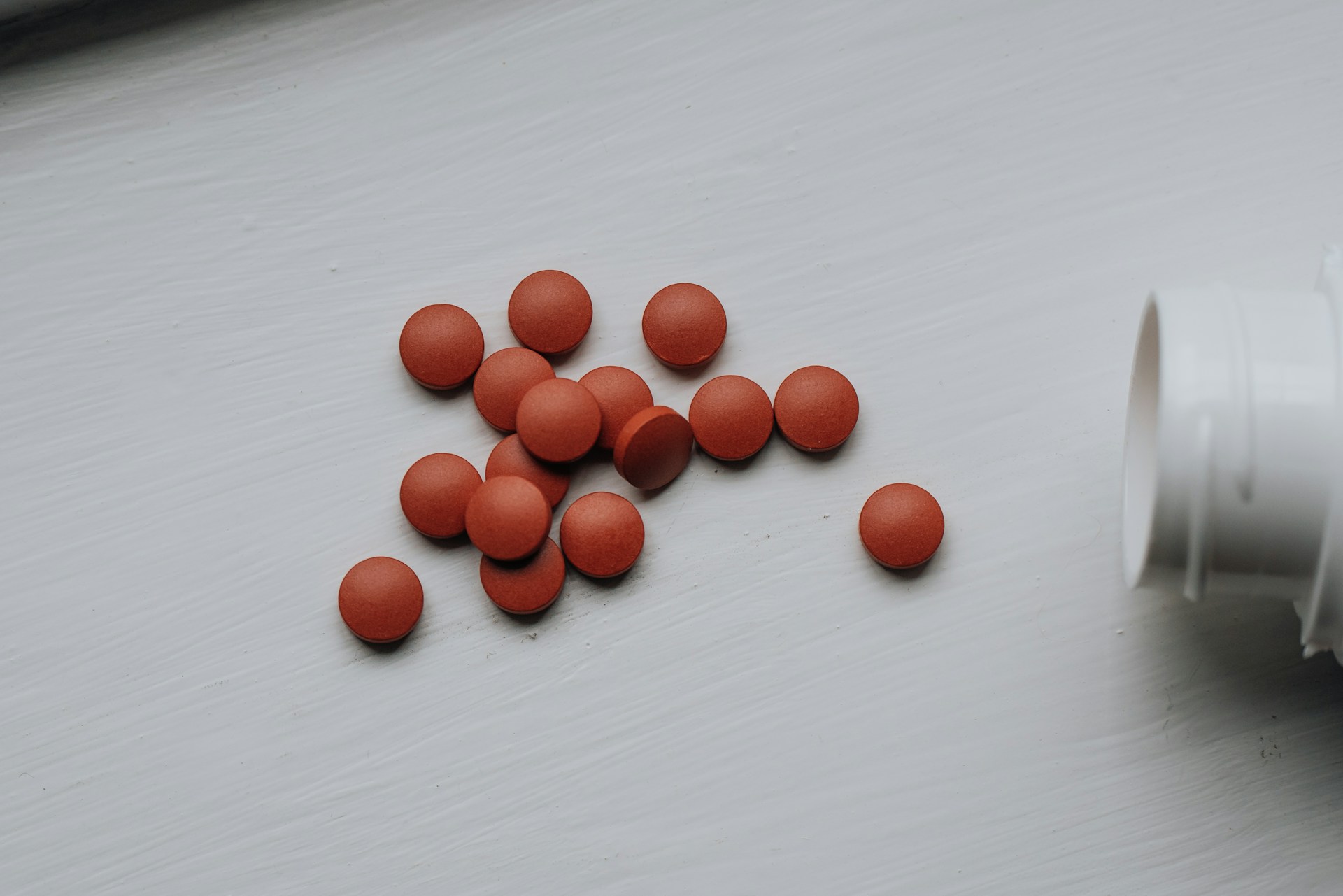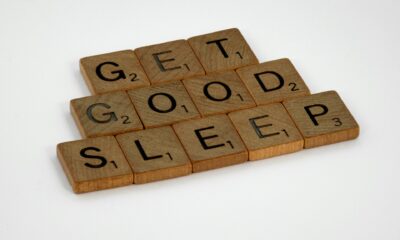Health
New Study Uncovers Liver Dangers in 6 Common Herbal Supplements

Many Americans turn to herbal supplements in hopes of improving their health, seeking alternatives to traditional pharmaceuticals due to their “natural” origins. However, even these seemingly benign supplements can pose significant health risks, particularly to liver health. A recent study has shed light on popular herbal supplements that may contribute to liver damage. Below, we delve into six of these supplements and the potential risks they carry.
Turmeric
Turmeric, celebrated for its anti-inflammatory properties, is a staple in many households. Despite its benefits, the new study indicates that this golden spice can be potentially hepatotoxic, meaning it has properties that could harm the liver.
Lead author Alisa Likhitsup, MD, MPH, cautions that “how these products cause liver damage is not yet known but it is likely due to metabolism that occurs in the liver after the products were consumed.”
Green Tea Extract
Green tea extract, popular for its antioxidant effects and weight loss benefits, is widely consumed. Despite its reputation, the extract has been flagged as potentially damaging to the liver.
“Chemical analyses of HDS products associated with confirmed liver toxic effects show frequent discrepancies between product labels and detected ingredients,” the study notes.
Ashwagandha
Often lauded for its ability to reduce stress and anxiety, ashwagandha is another herbal supplement that may pose risks to liver health. As with the other supplements, more research is needed to fully understand how it interacts with the liver.
“Potentially hepatotoxic botanical products are the products that contain plant-based ingredients which have been implicated as potential causes of liver damage,” says Dr. Likhitsup.
Red Yeast Rice
Red yeast rice is commonly used to lower cholesterol levels. Despite its natural origins, it can still lead to liver complications, suggesting that even supplements derived from food products aren’t always safe.
The study highlighted that as of 2022, over 80,000 herbal and dietary supplements could be purchased without the need for a prescription or FDA approval, which includes red yeast rice.
Black Cohosh
Black cohosh is frequently used to manage menopausal symptoms. Nevertheless, this botanical remedy has been associated with liver toxicity, making it a risky option for those seeking natural treatments.
Researchers noted that the prevalence of these hepatotoxic supplements among adults suggests a need for greater awareness and possibly more stringent regulations.
Unknown Botanicals
Aside from these well-known supplements, there are numerous other botanical products that might also be harmful to the liver.
“We hope our results will increase awareness among patients and providers about these potentially liver toxic ingredients being consumed regularly among Americans and the dietary supplement products available in the market are not strictly regulated,” Dr. Likhitsup concluded.
It’s crucial to approach herbal supplements with the same caution as pharmaceuticals. Despite their “natural” branding, they carry potential risks that are often underestimated. Always consult healthcare professionals before introducing new supplements into your regimen to ensure they are appropriate and safe for your specific health needs.
Let us know what you think, please share your thoughts in the comments below.

Health
Pain Relievers Linked to Increased Tinnitus Risk, Study Finds

If you regularly use over-the-counter pain medications such as ibuprofen, acetaminophen, or aspirin, it’s important to be aware of potential risks. Recent research suggests that frequent use of these medications could increase the likelihood of developing tinnitus, commonly known as ringing in the ears.
A study published in the Journal of General Internal Medicine followed over 69,000 women for two decades. The findings revealed that those who frequently took nonsteroidal anti-inflammatory drugs (NSAIDs) or acetaminophen had nearly a 20 percent higher risk of experiencing tinnitus.
“Because over-the-counter analgesics are widely available without a prescription and perceived to be safe, frequent use of these medications is very common,” explains Sharon Curhan, M.D., the lead author of the study and an assistant professor of medicine at Brigham and Women’s Hospital, Harvard Medical School.
“Most people are not aware of the potential harm that these medications may cause and the possibility of adverse interactions with other medications, particularly when used frequently,” Curhan adds.
Many cold and sinus medications also include these painkillers, which can lead to unintentional overuse.
“It’s possible to take more of these medications than is intended or recognized,” Curhan notes.
Interestingly, the study found that frequent use of low-dose aspirin (100 mg or less) did not increase the risk of developing tinnitus. Curhan describes this as a “helpful finding,” especially for those who take low doses of aspirin to prevent cardiovascular issues and other conditions.
Moreover, women aged 60 and older who frequently took moderate doses of aspirin (325 mg or more) did not show an increased risk of tinnitus. However, the risk was higher among younger women. All participants in the study were initially between the ages of 31 and 48 and did not have tinnitus at the start.
Previous research has also indicated a connection between regular use of aspirin, NSAIDs, and acetaminophen and hearing loss in men. The new study emphasizes the need for further research on the relationship between pain medication and tinnitus in men and non-white women.
Understanding these risks can help you make more informed decisions about your health. Always consult with a healthcare provider before making any changes to your medication regimen.
Let us know what you think, please share your thoughts in the comments below.
Health
Why You Might Be Losing Sleep and How to Fix It

Suddenly finding yourself unable to sleep can be frustrating and perplexing. Insomnia can stem from various causes, and understanding these can help you regain restful nights.
Napping Habits
Many adults unintentionally fall asleep while watching TV or when not busy. According to Dr. Doghramji, “your brain sees it as sleep.” This often occurs between 2 and 3 in the afternoon, a natural energy dip time. This can make you less tired at bedtime, leading to insomnia. Instead of napping, consider scheduling an active task during this period to boost energy and improve sleep quality.
Nap Wisely
If a nap is unavoidable, Dr. Pelayo suggests keeping it under 40 minutes to avoid grogginess. It’s also beneficial to nap where you usually sleep to maintain a consistent sleep environment.
Bedtime Activities
Reading might seem like a relaxing pre-sleep activity, but Dr. Harris advises against doing it in bed.
“I prefer that the bed is only used for sleep and sex,” she says. Activities like puzzles or coloring can also make your brain associate the bed with wakefulness, affecting your ability to fall asleep.
Alcohol Consumption
A glass of wine might help you fall asleep initially, but it can cause fragmented sleep later. Research indicates that alcohol can lead to lighter sleep in the second half of the night, causing you to wake up around 3 a.m. To minimize this, limit alcohol intake to three hours before bedtime and drink moderately.
Medication Timing
Poor timing of medications can disrupt sleep. Diuretics for blood pressure can increase nighttime urination, and some antidepressants can be either energizing or sedating. Dr. Doghramji notes that taking more than one or two bathroom breaks at night is abnormal. Always consult your doctor before adjusting medication timings.
Managing Stress
Stress can make falling asleep difficult and lead to fragmented sleep. Dr. Pelayo suggests keeping stressors, like bills, out of the bedroom.
“Put it in a separate room so when you go to your room, it’s a different world,” he says. Journaling or making lists can help manage persistent thoughts.
Sleep Environment and Routine
Lying in bed trying to force sleep can backfire. Dr. Harris recommends getting up and doing something relaxing in a different room if you can’t sleep.
“Sleep will come when it comes. If not tonight, don’t sleep in to compensate — and you’ll likely sleep better the next night,” she says.
Sleep Disorders
Insomnia can be a symptom of over 80 sleep disorders, including sleep apnea, restless leg syndrome, and narcolepsy. Older adults are particularly susceptible to REM sleep behavior disorder (RBD), which can be an early warning sign of neurodegenerative conditions like Parkinson’s. Non-sleep disorders, such as pain, arthritis, and PTSD, can also cause insomnia.
Exercise
Exercise can improve sleep quality, but working out too close to bedtime might be counterproductive. Aim to exercise at least two hours before bed to allow your body to wind down.
Treatment Options
Cognitive Behavioral Therapy for Insomnia (CBT-I)
CBT-I is often the first-line treatment for insomnia, addressing habits and thoughts that keep you awake. Medication can be an option but comes with side effects, especially for older adults. A newer category of medication, dual orexin receptor antagonist (DORA), has shown promise for older adults with insomnia.
CBT-I can help retrain your thoughts to calm your mind. Dr. Doghramji suggests using CBT-I apps during the day to practice these skills.
When to Seek Help
If insomnia impacts your daytime function or persists despite self-help efforts, consult a doctor. Working with a sleep specialist can help identify the root causes and establish a personalized treatment plan.
“Modern sleep medicine has reached a point where most sleep disorder will improve when addressed correctly,” says Dr. Pelayo. “So you shouldn’t suffer with a sleep disorder anymore.”
Let us know what you think, please share your thoughts in the comments below.
Health
Lung Cancer Screenings: 5 Million Adults Urged to Take Action

Even if you haven’t touched a cigarette in decades, you might still need an annual lung cancer screening. This is based on the latest recommendations from the American Cancer Society (ACS).
The updated guidelines now suggest that adults aged 50 to 80 who currently smoke or have smoked the equivalent of one pack a day for 20 years should undergo an annual low-dose computed tomography scan (CT scan). This recommendation stands regardless of how long ago they quit smoking.
These new criteria, detailed in the journal CA: A Cancer Journal for Clinicians, expand screening recommendations to an additional 5 million adults.
Previously, the ACS guidelines stated that individuals no longer needed annual cancer screening if it had been 15 years since they quit smoking. It was also only recommended for current or former smokers between the ages of 55 to 74 who had smoked the equivalent of one pack a day for 30 years or more.
Robert Smith, the lead author of the guidelines and senior vice president of early cancer detection science at the cancer society, noted in a news release that the change is based on new studies.
These studies “have shown extending the screening age for persons who smoke and formerly smoked, eliminating the ‘years since quitting’ requirement and lowering the pack per year recommendation could make a real difference in saving lives.”
Maher Karam-Hage, M.D., professor of behavioral science at the University of Texas MD Anderson Cancer Center, highlighted the broader impact of these changes. He mentioned that broadening the eligibility criteria will help to “include more women and minorities, who typically smoke fewer cigarettes daily.”
“Reducing the age and pack-year requirements allows them to qualify sooner, potentially leading to earlier detection of any suspicious nodules or masses,” he told AARP in an email.
Pack-year is a measure used to describe how many cigarettes a person smoked and for how long. For instance, a person would have a 20-pack-year history if they smoked one pack a day for 20 years, or two packs a day for 10 years.
Let us know what you think, please share your thoughts in the comments below.
-

 Health4 months ago
Health4 months ago17-Second Neuropathy Solution
-

 Health11 months ago
Health11 months agoPreventing Falls and Injuries for Seniors
-

 Nutrition8 months ago
Nutrition8 months agoThe Aging Secret of Vitamin D Unveiled
-

 Health3 months ago
Health3 months agoOncologist Reveals Top 5 Cancer Prevention Tips You Shouldn’t Ignore
-

 Nutrition12 months ago
Nutrition12 months ago5 AMAZING Dinner Recipes That Are Also HEALTHY
-

 Lifestyle4 months ago
Lifestyle4 months agoSleep Soundly with These 11 Expert-Approved Bedtime Routines
-

 Health9 months ago
Health9 months agoDownsizing Tips: Simplifying Your Lifestyle
-

 Health7 months ago
Health7 months agoBoost Your Heart Health: Simple Tips for Seniors
Linda
August 27, 2024 at 1:35 pm
No concrete studies shown. This appears to be another “scare” tactic. Need the facts to back up these statements.
Pat Martin
August 27, 2024 at 3:09 pm
where does this information come from? Likely the government who does not want us to be healthy,.